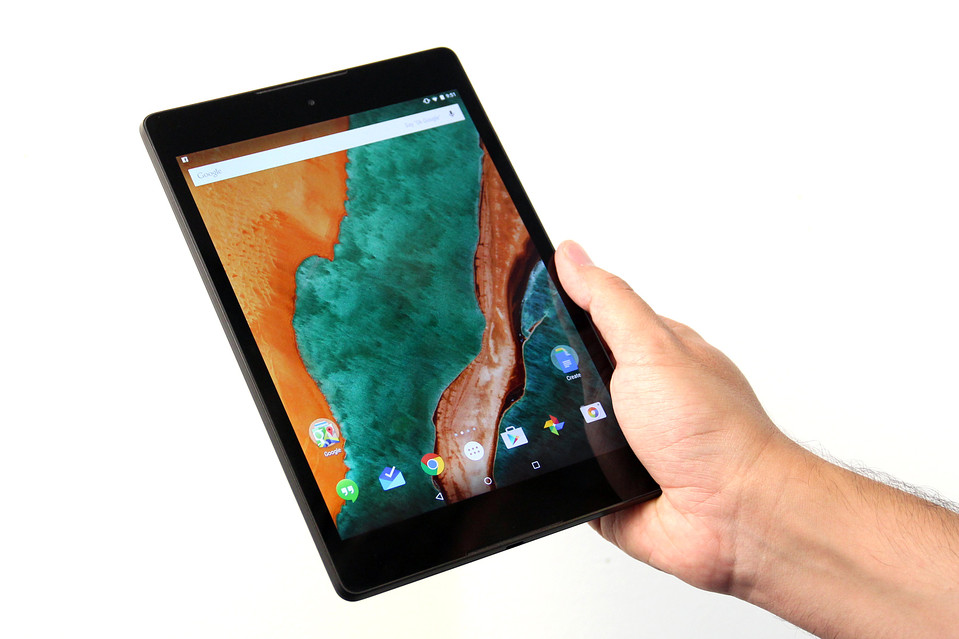Google Nexus 9: A killer tablet for Android fanatics

The Nexus 9, built by HTC and running the Lollipop version of Android, is Google's latest tablet. WILSON ROTHMAN / THE WALL STREET JOURNAL
Google has had a really good thing going with the Nexus 7 these past two years. With its 7-inch display, it was the tablet equivalent of a paperback book: effortless to tote around, and cheap enough ($200 for the first-gen; $230 for last year's model) to be a no-brainer purchase. It was perfect for e-books, games, email, video, websites and social feeds. With its great display, ample power and pleasing portability, it felt like it was worth more than its price tag.
The Nexus 7 formula wasn't broken, but Google went and fixed it anyway. The Nexus 7 tablet has been discontinued, and the Nexus 9 is the replacement.
Designed by Google in collaboration with HTC, the Nexus 9 is bigger, less portable and almost twice as expensive as its predecessor. With a 9-inch display and $399 price tag, it's now competing squarely against Apple's iPad Air models. After using the Nexus 9 for almost a week, I can say that while it's a great tablet, it's not for everybody.
Performance isn't a concern with the Nexus 9. It feels Dale Earnhardt Jr.-fast thanks to a new 64-bit Nvidia Tegra K1 processor and 2GB of RAM. The 8.9-inch display packs a 2048x1536-pixel resolution, the same found on Apple's 9.7-inch iPad Air 2, and it does look about as good as Apple's latest—although the Nexus is more prone to glare.
The styling is refreshingly minimal and utilitarian compared to the upscale flash of Apple's aluminum iPads, or Samsung's chrome-edged and pleather-backed Galaxy tablets. The soft-touch plastic back offers plenty of grip without feeling sticky. The one detail that feels remotely luxurious is a brushed-metal frame sandwiched between the back panel and the Gorilla Glass 3 face. At 0.31 inches thick and 0.93 pounds, it's thin and light enough that holding it with one hand is easy—though still not as easy as the slightly thinner, slightly lighter iPad Air 2.

Google's Nexus 9, built by HTC, isn't quite as thin or light as Apple's iPad Air 2, but it's thinner than previous Nexus tablets. WILSON ROTHMAN / THE WALL STREET JOURNAL
The Nexus 9 is really designed to fade away into the background, so that what grabs your attention is Google's beautifully slick new version of Android known as 5.0 or, more commonly, Lollipop. In fact, the Nexus 9's most commendable feature is that it's among the first devices that can give you a taste of that new OS.
Every hardware maker changes Android in the name of differentiation, but they all introduce faults: Samsung overloads Android with features you don't need, LG makes Android feel cluttered, Asus makes it look different with no added utility. And Amazon reworks Android entirely, making it a more direct pipeline to its digital storefront.
If you want to see Android as Google intended it—not coincidentally the best rendition of Android available—you need to get a Nexus device.
Every aspect of Android has been totally redesigned for Lollipop, and many details demonstrate how Lollipop is easier to use than previous versions. For example, you can double tap on the Nexus 9's display to wake the tablet up. If you have any app notifications, they'll appear stacked like a pile of fortune cookie paper strips, right in the middle of the lock screen. You can swipe away any that you don't want to see again, and double tap a paper scrap to jump directly to the app it that sent it.
The interface is so smooth that it feels almost like liquid, and its playful pop-art look brings more personality to Android than I've ever seen before. Google's clock, calculator and calendar apps are full of bright colors (magentas, teals, light blues), and there are illustrations, reminiscent of those used in Google Now, within the calendar and other apps.
Details like this make Android feel like it was thoughtfully crafted rather than coldly programmed. And playing up the connection to Google Now is wise: The service that aims to predict what you might need—appointments, sports scores, flight details, package deliveries, nearby concerts, upcoming birthdays—before you ask for it is one thing Google has cooked up that Apple still can't match.
Playing catch-up on apps
Unfortunately, when it comes to apps, Android still feels behind the curve compared to iOS. The iPad just has more apps tailored specifically to the larger display. Sure, Android now has a ton of top-notch games to play (“Clash of Clans,” “Star Wars: Galactic Defense,” “Monument Valley”). It also has access to Netflix, Hulu, Amazon Instant Video, Spotify, Pandora and Beats—nearly any decent streaming media besides iTunes. But must-have apps like Twitter and Facebook still feel like stretched-out phone apps rather than something built for the big screen. And app makers still overwhelmingly launch their latest designs on iOS before heading over to Android.
The Nexus 9 also lacks the multitasking powers that some key non-iPads have: Samsung hacked its version of Android to run multiple apps in pop-up windows; Windows tablets run apps side by side.
This all leaves the Nexus 9 in a peculiar place. It's an outstanding piece of hardware, and the best all-around Android experience available on a tablet. But if you care about apps, you're still going to lean towards an iPad, and if you care about productivity, you may well aim towards the Galaxy Tab S or even a Surface Pro 3 instead. And if you just want to curl up on the couch with a good book or movie, well, go to eBay and find yourself a Nexus 7. They're still great.
Write to Nathan Olivarez-Giles at nathan.olivarez-giles@wsj.com or @nateog on Twitter.













